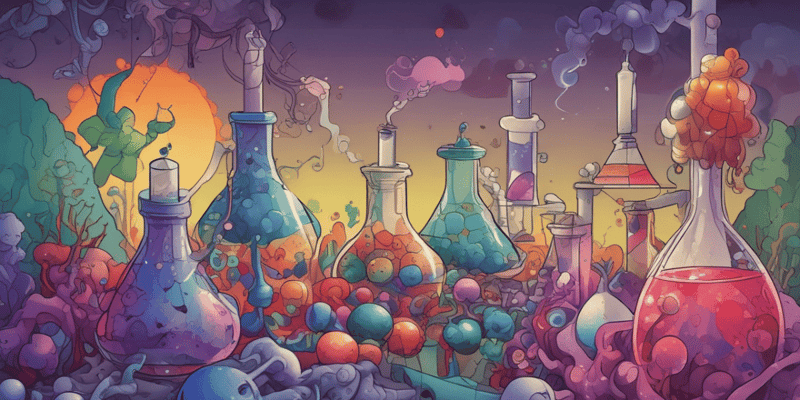Questions and Answers
Which group of the periodic table do P-block elements occupy?
Groups 13 to 18
What type of outer electron shells do P-block elements fill?
s and p orbitals
What is a common property exhibited by p-block elements?
Tendency to form multiple bonds
Which element exhibits non-metallic behavior among p-block elements?
Signup and view all the answers
Where is phosphorus commonly found?
Signup and view all the answers
What is a vital component of the Earth's atmosphere among p-block elements?
Signup and view all the answers
Which element is a key component in the production of semiconductors and solar cells?
Signup and view all the answers
What role do nitrogen compounds play?
Signup and view all the answers
What trend is observed as one moves down the group of p-block elements?
Signup and view all the answers
What is a key application of carbon?
Signup and view all the answers
Which element forms compounds such as carbon dioxide, methane, and diamond?
Signup and view all the answers
What is a crucial application of phosphorus compounds?
Signup and view all the answers
What is a diverse property of p-block elements?
Signup and view all the answers
What is a unique property of carbon compounds?
Signup and view all the answers
What is a significant application of silicon?
Signup and view all the answers
Study Notes
P-block elements are a fascinating group of elements in the periodic table, occupying groups 13 to 18. They are characterized by the filling of outer electron shells (s and p orbitals), which gives them a wide range of chemical properties and diverse applications. In this article, we will explore the properties, occurrence, compounds, uses, and trends of P-block elements.
Properties of P Block Elements
P-block elements display a variety of properties due to their diverse electron configurations. They can exist in different oxidation states, forming a wide range of compounds. These elements can exhibit metallic, non-metallic, or metalloid behavior. For instance, carbon and silicon are nonmetals, while boron and aluminum display metallic properties. Additionally, p-block elements often form covalent compounds and exhibit a tendency to form multiple bonds.
Occurrence of P Block Elements
P-block elements are found abundantly in the Earth's crust and play a crucial role in natural processes. Carbon, for example, is a fundamental component of organic compounds and is present in various forms such as coal, graphite, and diamond. Nitrogen is a vital component of the Earth's atmosphere, while phosphorus is commonly found in phosphate minerals. These elements are also essential for living organisms, as they are key components of biological molecules such as proteins, DNA, and RNA.
Compounds of P Block Elements
P-block elements form a wide array of compounds with diverse chemical properties. For instance, carbon forms compounds such as carbon dioxide, methane, and diamond, each with unique properties and applications. Silicon compounds are widely used in the electronics industry, while nitrogen compounds are essential in fertilizers and organic synthesis. Compounds of phosphorus are crucial in agricultural fertilizers, detergents, and the production of various chemicals.
Uses of P Block Elements
P-block elements have numerous practical applications across different industries. Carbon is utilized in the production of steel, as a fuel source, and in the manufacturing of various organic compounds. Silicon is a key component in the production of semiconductors and solar cells. Nitrogen is used in the manufacturing of ammonia for fertilizers, while phosphorus compounds are essential for agricultural productivity and in the production of detergents and pesticides.
Trends in P Block Elements
P-block elements exhibit several trends that are important for understanding their chemical behavior. As one moves down the group, the metallic character of the elements increases. For example, carbon and silicon are nonmetals, while elements like tin and lead display more pronounced metallic characteristics. Additionally, the atomic and ionic sizes of p-block elements generally increase as one moves down the group, leading to variations in their chemical reactivity and bonding properties.
In conclusion, P-block elements encompass a diverse group of elements with a wide range of properties, occurrences, compounds, and uses. Understanding the trends in their behavior is essential for comprehending their chemical reactivity and applications in various fields. From the essential role of carbon in organic chemistry to the industrial applications of silicon, these elements are integral to numerous aspects of our daily lives and the functioning of the natural world.
Studying That Suits You
Use AI to generate personalized quizzes and flashcards to suit your learning preferences.
Description
Explore the properties, occurrence, compounds, uses, and trends of P-block elements in the periodic table. Learn about their diverse chemical properties, applications in various industries, and important trends in their behavior.




